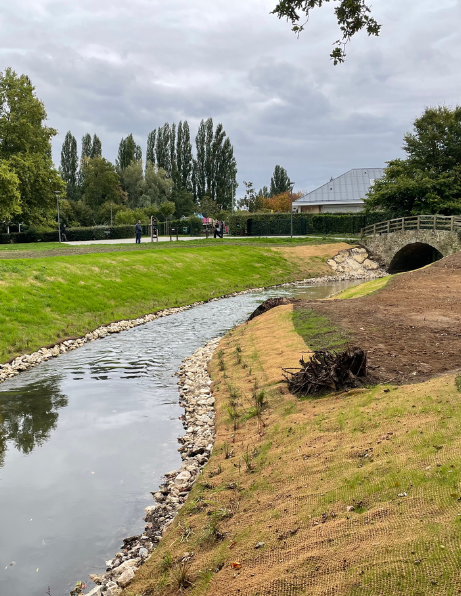INGETEC | NATURAL HABITATS AND ECOSYSTEMS
Restoring natural habitats to protect living systems
Ingetec designs and delivers projects to recreate, reinforce, and regenerate ecosystems — ensuring their long‑term protection well beyond the intervention phase.
Solutions powered by the living world, for the living world.

We conduct ecological engineering design and management studies, with most of our projects focused on renaturation. The aim is to transform previously artificial or degraded spaces, restoring their fully natural character.
We provide solutions that protect ecosystems and living organisms, while ensuring the ecological continuity of the landscape. Our mission is to restore natural habitats and safeguard nature itself.
Our guiding principle is clear: solutions by life, for life. Every project is embedded in a holistic, systems‑based approach that integrates corporate social responsibility and eco‑design principles to strengthen ecosystem resilience, expand ecosystem services, and drive the recovery of biodiversity.


Ecological engineering: a methodology for preserving natural habitats

Ecological engineering lies at the core of our work, helping to build the resilience of ecosystems. This approach considers every aspect of the natural balance — from the water cycle and the mitigation of urban heat islands, to carbon sequestration, quality of life, and the existing biocenoses compared to their pre‑degradation potential.
For example, to enable fish species to migrate upstream, we remove or lower obsolete weirs whenever possible, and redesign river meanders to restore natural flow dynamics and ensure ecological continuity. In doing so, we recreate habitats that support species’ full life cycles — including sediment transport processes and appropriate substrate composition.
We work in close collaboration with:
Local syndicates Inter‑municipal associations
Departments Joint associations
Fishing federations Public agencies
Water agencies
Local syndicates
Inter‑municipal associations
Departments
Joint associations
Fishing federations
Public agencies
Water agencies

Keywords
- Renaturation
- Valley floor re‑opening
- River re‑meandering
- Soil and bank erosion control
- Soil bioengineering
- Hydromorphological restoration
- Stream re‑opening
- Ecological restoration
- Sedimentology
- Ecological connectivity
- Wetland preservation
Areas of intervention for territorial restoration
- Terrestrial environments
- Aquatic environments
Restoring natural habitats: how we address your challenges
Our natural habitats and ecosystems leads
To support your projects, Ingetec relies on a multidisciplinary team of more than 80 professionals across 8 offices, including experts with over thirty years of experience in their field.
This division is led by:

Pierre-Brieuc DESTOMBES
Head of Discipline
Aquatic Environments

Benoit MIREY
Head of Discipline
Environment